Rwanda - Genocides English
Human nature and demystification of the civilization
Genocide and massacres in Rwanda and Burundi
By Didier Bertin - May 6, 2014
From an extensive analysis of the last genocide of the twentieth century (Rwanda) and taking into account the other two genocides and other mass killings of the same century, we tried to find an explanation for these tragedies in which human nature and brain structure have played a major role impervious to the effects of civilization that follows a different evolutionary process from that of human nature.
I-Very similar situations with different levels of economic underdevelopment in Rwanda and Burundi
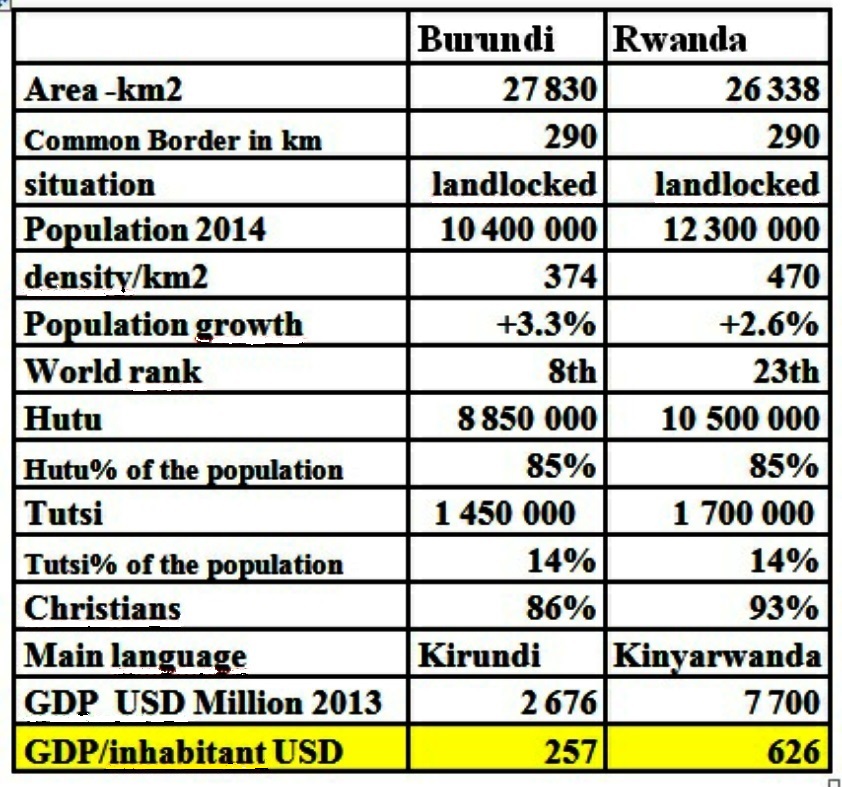
Both countries were administered as a single entity by German then by the Belgians as the Ruanda-Urundi; Belgian had occupied the German colony in 1916 and had obtained an administrative mandate of the League of Nations in 1924. In 1946, the UN confirmed the Belgian mandate subject to a preparation to the independence of the country. Rwanda became autonomous in 1959 and Rwanda and Burundi declared their independence in 1962 as two separate countries contrary to the expectations of the United Nations for one single entity.
Despite their strong similarities these two countries are distinct by their languages and especially their by economic situation. However, their languages are quite similar and their speakers understand each other. Some Media utilize the two languages indifferently for the two countries. Burundi's GDP in total value and per capita is respectively 35% and 41 % of that of Rwanda.
II - Social, ethnic and clan structure
The people of Burundi and Rwanda are composed of a large majority Hutu (approximately 85%) and of a minority of Tutsi (about 14%). The influence of European racist theories of the twentieth century prompted the colonial authorities to consider these two groups as separate races, those of Bantu for the Hutu and the Hamitic i.e. descendants of Noah's son, Ham, and coming from Ethiopia, for the Tutsi. The only thing that is significant and that is checked is that the Hutu are often farmers and Tutsi often herders. These basic activities are a way of identification of the two groups. However as a result of their willingness Tutsi and Hutu are considered as two ethnic groups each one including hundreds of clans. It should be noted that in Mali and Rwanda and Burundi herders traditionally enjoy a better consideration than farmers. In Mali, for example, the Fulani as herders have a better social position than the farmers Hummbeebe and in Rwanda the King was traditionally a leader (Mwami) of a Tutsi clan.
European occupants have exploited this situation in applying a European scheme and identified roughly Tutsi to nobility and Hutu to commoners. This European caricature could only result in frustration leading to explosions. Belgium and the Church utilized first the Tutsi to expand their ideas and then turned after to the Hutu when they realized that Tutsi were supporters of national independence.
The main concern of the Western countries in Africa is the resources of this continent and not the harmony of their peoples; this was demonstrated by their disinterest for the preparation of the genocide and its implementation.
III- Demographics
High population growth in Rwanda and Burundi, their restricted areas and their extreme poverty have participated to the development of hatred between Hutu and Tutsi in addition to the hierarchical stereotypes they had been inculcated.
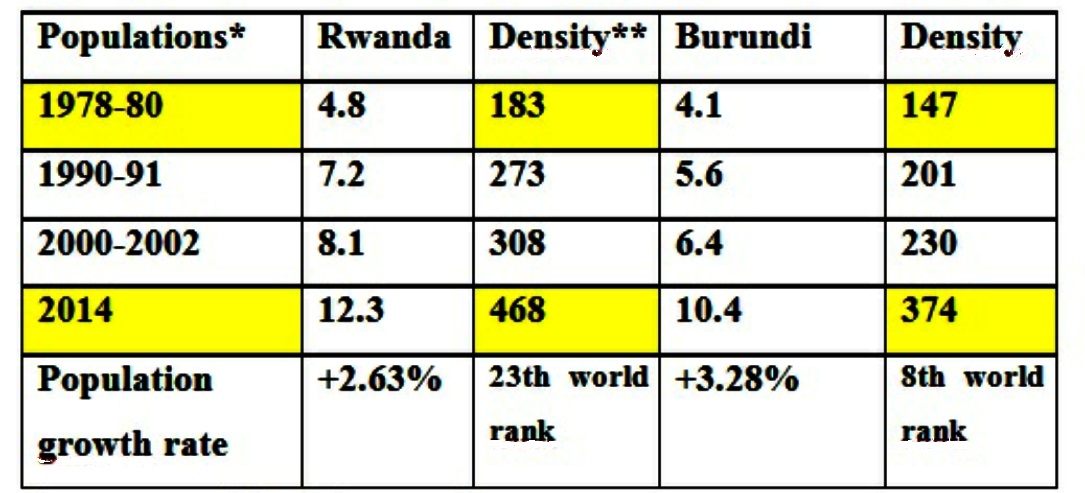
Population densities are very high and that of Rwanda is the highest of Africa. Hutu living from products of the soil should be probably more penalized by the reducing available space per capita.The GDP of Burundi and Rwanda are still highly dependent on agriculture, which constitutes 34.4 % and 32% respectively and employs over 90% of the populations of both countries. From the years 1980s to 1990s the population density increased by 49 % in Rwanda and 37% in Burundi. The density increase has continued from 2000 to 2014 by + 52% in Rwanda and +63% in Burundi.
From 1980 to 2014 the people of Rwanda and Burundi were each multiplied by 2.55.
IV -Economy
Burundi, like Rwanda therefore depend substantially on their agriculture and produce in particular coffee , tea, potatoes , sorghum , bananas , cassava ....
The share of industry and services in GDP are similar for the two countries but in value Rwanda generated in 2013 a GDP 2.9 times higher than that of Burundi. GDP per capita in 2013 of Rwanda was only 626 USD but that of Burundi has an almost negligible value of 257 USD. Out of 185 countries taken in consideration Burundi ranks 184th and is virtually the world's poorest country with Congo while Rwanda ranks 166th. At this level of extreme poverty the ethnic hierarchy inhabits more minds than reality.
People under the poverty line are calculated on the basis of the poor local median income and thus whole the population lives under a realistic poverty threshold
The poverty threshold should be determined for very poor countries on the basis of parameters that reflect human needs while usual local parameters send back poor countries to their poverty.
V- Religion
In both Rwanda and Burundi European missionaries have imposed Christianity to about 90 % of the population who is catholic in majority. As in all countries Christianity has only masked the traditional beliefs of the people without creating a real link between them. The populations of both countries believe in a supreme God called "Imana" who does not intervene in earthly affairs for which we can assume that men have free rein. The clergy first sought the support of Tutsi to extend in amplifying the idea of ethnic identity and then has preferred the Hutu that they have considered as more malleable and less attracted by national independence.
A number of priests stood up for the genocidal militias in Rwanda and were sentenced in absentia when they were exfiltrated trough Zaire to France or Belgium. Exfiltration networks were organized by members of the clergy. Some of exfiltrated priests were even in charge of a diocese in France.
We see again the contradiction of the Church between its principles and its actions; John Paul II had indicated his desire that the culprits be prosecuted but simultaneously dignitaries of the Church had organized the opposite policy.
The image of the church was already tarnished by exfiltration networks for Nazi criminals e.g. those of Bishop Alois Hudal or father Krunoslav Draganovic.
The Church claims now the disavowal of these Rwandan priests but remains responsible for not having implemented the means to neutralize them in time as this was already the case for pedophile priests. To date lawsuits are still pending against Rwandan priests in France.
VI- Explosive factors and explosions
The combination of small space, rapid demographic growth, high poverty and divided population based on stereotypes could only lead to an explosion that has sparked a very restricted interest from Western countries and from the UN.
Colonization had exacerbated interethnic tensions instead of showing the virtues of democracy; since the elections of 1961until 1996 Burundi has seen many coups and assassinations of its Presidents. In Burundi Hutu and Tutsi conflicts increased and interethnic massacres were continual and reached paroxysms in 1972 against Hutu and in 1993 mainly against Tutsi in the frame of a civil war. A UN investigation commission reported genocidal acts against the Tutsi which foreshadowed the genocide of Tutsi in Rwanda.
Rwanda was also marked by interethnic slaughters but suffered much fewer coups than Burundi due to their longer duration.
During the Belgian colonization and during the eras of Grégoire Kayibanda and Juvenal Habyarimana, who remained in power from 1973 to 1993 ( date of his death ) many Tutsi were forced to flee in Tanzania and Uganda, where they created a resistance party : the RPF (Rwandan Patriotic Front). Juvenal Habyarimana, who enjoyed the support of France, organized the preparation of the Genocide of Tutsi, which was led after his death by Minister Jean Kambanda and Colonel Théoneste Bagosora in 100 days with a killing ratio of about 70%.
1- Explosion in Burundi
In the first elections September 18, 1961, the majority Tutsi party UPRONA won 58 of the 64 seats with the support of Hutu showing that the opposition orchestrated between the two ethnic groups has not always been effective; during the same year the Prime Minister Louis Rwagasore was assassinated followed by a period of instability during which the power passed into the hands of Hutu. Independence was proclaimed on 1 July 1962 but in 1965 it was the turn of the Hutu Prime Minister Pierre Ngendandumwe to be assassinated and this was followed by slaughters of Tutsi. In 1966 the Tutsi Captain Michel Micombero overthrew the Tutsi king and proclaimed a republic. In 1972 Tutsi were massacred and Captain Micombero took retaliatory measures which made a hundred thousand of victims among the Hutu.
In November 1976 the Tutsi Colonel Jean Baptiste Bagaza took the power but focused on the economic development of Burundi and remained at the head of the country until 1987. In 1987 he was in his turn overthrown by Major Pierre Buyoya who sought to unite Hutu and Tutsi.
In 1993 elections brought to power the Hutu Melchior Ndadaye who was assassinated after 102 days by Tutsi soldiers and the Tutsi Prime Minister was charged of the interim presidency.
After the overthrow, thousands of Tutsis were massacred in retaliation and the army repressed the Hutu. About 100 000 people including mainly Tutsi were killed in 1993. "A UN investigation reported genocidal acts against the Tutsis."
In January 1994 Cyprien Ntaryamira was elected president, but died on 6 April 1994 in the bombing of the plane of the Rwandan President, which was landing at Kigali.
A new president was appointed but was overthrown by a military coup of Major Buyoya, who advocated as previously an agreement between Hutu and Tutsi and a return to democracy. This new orientation was confirmed by the implementation of the Arusha's Agreement for peace and democracy dated of August 28, 2000.
2 - Explosion in Rwanda
The Belgians exiled before independence many Tutsi considered as too strong supporters of the national independence. For this reason, inter alia, the first president of Rwanda in office after the independence was the Hutu Grégoire Kayibanda who increased the interethnic opposition by utilization of the events of Burundi and amplified the exile of Tutsi out of Rwanda in 1972.
In 1973 another Hutu, Juvenal Habyarimana overthrew Grégoire Kayibanda; Juvenal Habyarimana was then elected in 1978, 1983 and 1988 and remained in office until his death in 1994. From 1978 to 1991 Juvenal Habyarimana had imposed a single political party in Rwanda.
In 1987 the exiled Tutsi created the RPF (Rwandan Patriotic Front) in Uganda and occupied a northern part of Rwanda in 1990. Rwandan President took advantage of this situation to call for help the socialist French President François Mitterrand. President Juvenal Habyarimana exacerbated the situation in staging a fake attack of Kigali by the RPF. The target of this staged operation was to drive a French military intervention in his favor. The French army unleashed then "Operation Noroit" (688 soldiers) officially to evacuate foreign civilians, but in fact to support the regime of President Juvenal Habyarimana and slow down the advance of the troops of RPF. Belgium which also intervened to evacuate foreign citizens was in disagreement with this policy and repatriated its troops. French troops on the contrary remained to support the government until the arrival of the peacekeeping mission of the UN in December 1993. The UN peacekeeping mission was the United Nations Mission for Assistance for Rwanda (UNAMIR), which was created following the signing of the Arusha's Agreements of 1992 and 1993 which included a cease-fire, the departure of French troops, the return of Tutsi exiles and their civilian and military integration.
The Canadian Major-General Roméo Dallaire was in command of UNAMIR which initially included 2,300 people who were shockingly reduced to 270 by the UN on April 21, 1994 when the humanitarian need should have involved its increase.
Operation "Turquoise" implemented on June 22, 1994 by France to stop the genocide of the Tutsi already substantially achieved, was performed with inconsistencies on the ground. In fact the genocide was really halted by the troops of RPF, the Rwandan Patriotic Army (RPA).
VII- on the way of genocide of the Tutsi in Rwanda
Events in Burundi left clearly foresee the risk of large interethnic massacres in the Great Lakes region:
1 - In October 1990 the French presidency was alerted by the Ambassador of France of a risk of genocide against the Tutsi population in Rwanda.
2 - In 1990 foreign civilians were evacuated.
3 - From 1990 to 1993, France brought a military support to a government that put in place the tools of genocide by creating:
a) The Coalition for the Defense of the Republic (CDR),
b) The Interahamwe militia (meaning those who fight together)
c) Radio Television of Mille Collines (RTLM), which called for the killing of Tutsi in 1992 when the French military were there.
5 - In 1993, a UN investigation commission reported genocidal acts against the Tutsi in Burundi.
6- On January 12, 1994 the Ambassador of France in Rwanda reportedthe existence of a plan of destabilization of Rwanda to stir up troubles permitting the elimination of Tutsi.
7 - On April 8, 1994, France informed of serious disorders, evacuated in a week the last foreign civilians from Rwanda in the frame of "operation Amaryllis".
8 - On April 21, UN reduced their force in Rwanda to only 270 people leaving free rein to genocidal supporters.
9 - The U.S. fought against the use of the word genocide in order not to have to intervene under the terms of the UN Convention on the Prevention and Punishment of the Crime of Genocide dated of 9 December 1948. US recognized their faults in 2001.
VIII- Involvement of France in Rwanda
1- France was the supplier of arms of Rwanda from 1987 to 1994.
2- Noroît operation from 1990 to 1993 brought military support to President Habyarimana against the RPF, while in 1992 he put in place the means to organize the genocide of Tutsi.
3 - It is only when the mission of UN Peace came to Rwanda in December 1993 that the French troops left Rwanda following the terms of Arusha's Agreements.
4 - Operation Turquoise was a UN operation conducted primarily by 2,500 French soldiers from 22 June 1994 to stop the massacres in Rwanda in consolidating a neutral humanitarian zone. However, the French army discovered on 27 June 1994 an area with 2 000 survivors of the genocide in Bisesero but intervened only on June 30 and during this period of 3 days Hutu massacred half of these survivors.
5 - From 2 to 20 July 1994 some French soldiers would have fought the troops of RPF.
6 - Genocidal people who were disarmed in the humanitarian area under French control were authorized to flee to Zaire.
7 - The RadioTelevision of Mille Collines was located by the French Army but not neutralized.
8 - The leaders of the UN mission (UNAMIR) and turquoise mission do not share the same views on the ongoing conflict.
9 - It was only on July 7, 1994 i.e. almost at the end of the genocide that France on the advice of its ambassador understood that the Rwandan government was not trustworthy and inspired the systematic massacre of Tutsi.
IX- Genocide Rwanda
1- Key facts
The trigger factor of the Tutsi genocide in Rwanda was the death of President Habyarimana on 6 April 1994 following an attack against his plane, which also involved the death of the was Burundian president. Genocide itself had been brewing for a long time and killing of Tutsi were called by Radio Television des Mille Collines and Hutu newspapers since 1992. The interim government was headed by Jean Kambanda who became prime minister after the death of President Habyarimana on 6 April and after the assassination of his Prime Minister Agathe Uwilingiyimana on 7 April 1994. Ten Belgian UN soldiers sent to protect Agathe Uwilingiyimana were also killed. The murder was committed by men of the guard of President Habyarimana. President Habyarimana had appointed Agathe Uwilingiyimana by political calculation because she was considered as an opponent by supporters of President Habyarimana.
The ethnic cleansing carried out by the Rwandan government destroyed 69 % to 75 % of the Tutsi population of Rwanda and only 367,000 people survived the genocide.
The genocide lasted 102 days from April 7, 1994, the day after the death of President Habyarimana to 17 July 1994 when the RPF took control of most Rwandan territory.
UN said that 800,000 Tutsi were killed and only 367,000 survived meaning that the number of Tutsis before the genocide amounted to 1.167 million out of 7.6 million people living in Rwanda i.e. 15.4 % of the population. According to UN the percentage of ethnic cleansing would have been 68.6 % but according to the Rwanda extermination rate was 75% with a million victims out of about 1,367,000 Tutsi representing 18 % of the population, which is plausible keeping in mind the approximate census of the population..
Exiles: Belgians began to encourage the departure of Tutsi to other countries like Uganda and Tanzania because they were too favorable to the national independence and the exile measures continued thereafter. At the time of the genocide of hundreds of thousands of Tutsi living in exile in Uganda and Tanzania got used to English language and Commonwealth countries. These countries constituted a reservoir of people for the RPF which was able to organize troops (RPA- Rwandan Patriotic Army), which halted alone the genocide. After the victory of the RPF, the return of exiles allowed to offset partially "in number" the human losses of Tutsi in Rwanda.
From 1990 to 1994 the RPF troops were increased from 2 000 to 25 000 soldiers including partly moderate Hutu, opposed to the 35 000 soldiers of the FAR (Rwandan Armed Forces or Forces Armées Rwandaises) who were trained by French officers. Despite their number, French weaponry and training, FAR were defeated by the RPA, which ended the genocide. In February 1995 the FAR officers were integrated into the new national army.
The Tutsi genocide is the third of the twentieth century after that of the Armenians and European Jews. It is characterized by an execution speed ever achieved far more with the use of the most rudimentary means. This execution speed was made possible by a massive participation of the Hutu population to the extermination alongside their militias. This population probably considered slaughters as an ethnic duty orchestrated and legitimized by the slogans of the Rwandan media and in particular by the Radio Television des Mille Collines.
There would have been to Rwanda more than one million participants in the genocide including organizers, jailers, killers, informants, looters and other accomplices. Nearly two million cases were examined by the popular courts called Gacaca (gatchatcha). It may be noted that the Hutu men from15 to 55 years old at the time of the events represented about two million people in Rwanda. It shows that a very substantial part of the Hutu population was involved in the genocide of Tutsi.
Gacaca were established for judging the many prisoners in acceptable period of time that the official justice could not ensure given the too big number of cases. It should be also noted that since 2007 the death penalty was abolished in Rwanda.
2 - The calls of the head of UNAMIR
Since his arrival in Rwanda in 1993, Major-General Roméo Dallaire repeatedly warned the UN of the lack of material, financial resources and men which did not allow UNAMIR to fulfill its mission. The few men of UNAMIR had only small arms and no fuel. Major-General Dallaire collided with the lack of interest of international powers and consequently of the UN. The behavior of key members has made possible the implementation of the Genocide despite numerous warnings and calls for help made by the head of UNAMIR. It is clear that the behavior of nations would not have had the same if Rwanda had attractive resources.
3- Genocide description
The massacres of Tutsi in Kigali began at the initiative of the Interahamwe militia established by President Habyarimana. The selection of Tutsi was simplified by the indication of ethnicity on identity cards. Extremists killed first the moderate members of the government and ten UN soldiers who tried to protect them. The massacres spread to the whole country and many Tutsi were executed with machetes, sticks and knives. Prior to their execution some victims served as an exutory of the sadism of their torturers. Women men and children including those in the bellies of pregnant women were killed in all places: houses, hospitals, churches and schools. The perpetrators did not even bury the bodies of their victims.
From July 8, 1993 Radio Television des Milles Collines gave instructions to kill Tutsi designated as "large trees" to kill or "cockroaches" to crush. Jean Kambanda and Colonel Théoneste Bagosora were convicted for genocide by the International Criminal Tribunal for Rwanda.
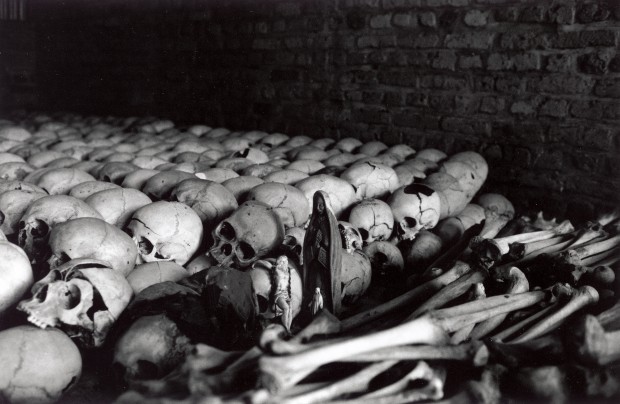
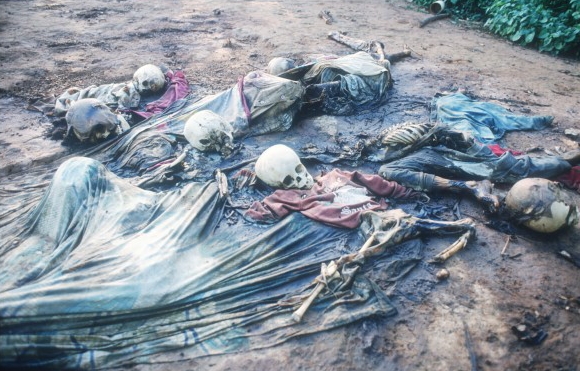
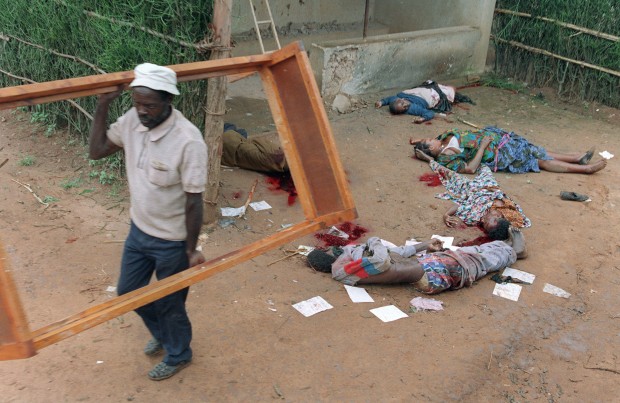
Looter during the genocide
X - After the genocide
On 19 July 1994 a government was formed to implement the Arusha's Agreements. General Paul Kagame who led the RPF to victory in July 1994 against the FDR and against the other genocidal people was elected president in 2000 by the parliament.
A new constitution was adopted by referendum in 2003 and during the same year, Paul Kagame was re-elected president by direct universal suffrage. The majority of the new National Assembly elected supported Paul Kagame. It is noteworthy that the Hutu majority of the population of Rwanda has elected a Tutsi; the country is now turning to a policy of forgiveness. Forgiveness applies to genocidal people but not to France since Rwanda think that it played a role enabling the realization of the genocide. Given this liability Rwanda has decided to move away from the Francophone countries and join the Commonwealth in 2009; moreover France was not allowed to attend the ceremony commemorating the genocide in Kigali in 2014.
XI- Genocides and mass killings in the twentieth century
1- Genocides in the twentieth century

a- Armenia:
The period for the Armenian Genocide is the year 1915 from 24 April and the year 1916; during this period the greatest massacres took place with a target of extermination but a significant number of Armenians were massacred before this period without significant reaction from western countries. This lack of reaction has probably been considered by the Turks as a signal to start a real genocide.
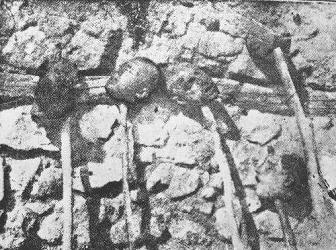
Heads tortured Armenians
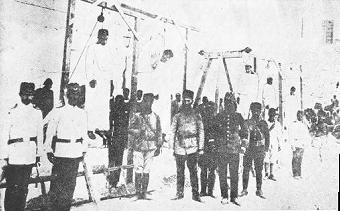
Multiple hangings organized by the Turks
b- Holocaust:
The Holocaust started mainly on the initiative of the mob of Eastern countries and in particular in Baltic countries. The mob started slaughters of Jews with rudimentary weapons taking advantage of the withdrawal of the Red Army under pressure from the German army which had launched the operation Barbarossa. Holocaust continued then with the bullets of the Einsatzgruppen and after in the death camps.
The overall percentage of extermination was 62.5 % of European Jews, but in Eastern countries where 84 % of the European Jews were living the extermination rate reached on average 67%. If we exclude the USSR whose resistance and offensive allowed to reduce the Holocaust , the extermination rate actually reached 87 % in Eastern countries where 53% of the European Jewish population was leaving i.e. in Baltic countries , Poland, Romania , Hungary, Yougoslavia, Czechoslovakia and Bulgaria.
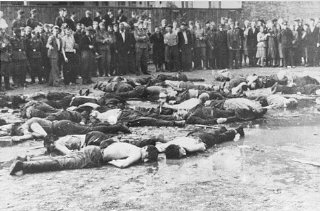
As soon as Russian troops withdraw the mob and armed militias starts slaughters of Jews in Lithuania with sometimes simple sticks as in Rwanda.

A member of a Lithuanian militia surrounded by the bodies of the Jews he killed
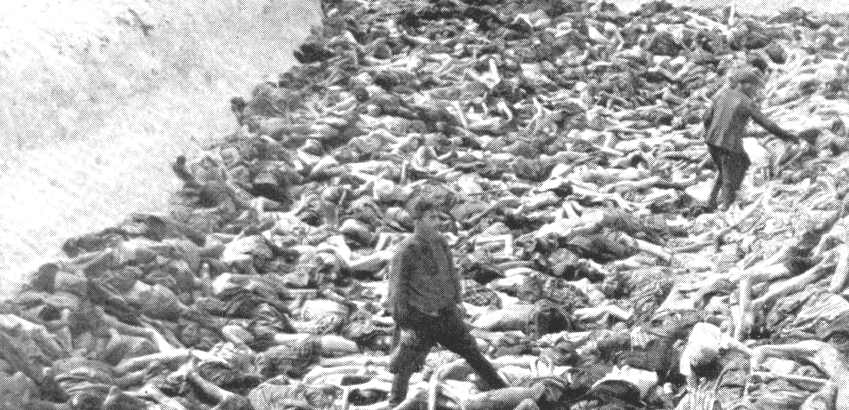
Bergen- Belsen - SS Fritz Klein among corpses
c- Rwanda:
The figure that we retain is the average of those of the UN and those of Rwanda; nearly 70 % of the Tutsi population was exterminated in 100 days due to the massive participation to genocide of the Hutu population (organizers, killers, informants, jailers, looters and other supporters) alongside the militias. This mass mobilization allowed reaching a record killing ratio of 9 000 people per day with often rudimentary weapons like sticks and machetes.
2 - Large-scale massacres in the twentieth century
As for the genocides, the cynical, sadistic and more generally perverse behavior of a substantial mass of human beings brought to a paroxysm which generated mass killings.
a- In the twentieth century the leaders of civilized nations triggered " two world wars " that have resulted in ten years wars spread over a period of thirty years and involving the death of nearly 90 million people .
b- In August 1945 the U.S. destroyed two Japanese cities with the first atom bombs to accelerate the surrender of Japan.
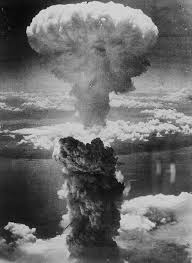
c- From 1955 to 1975 the U.S. launched with massive weapons a conflict in Vietnam which made 3,000,000 of victim mostly Vietnamese and however was ended with the defeat of the United States and their local allies.

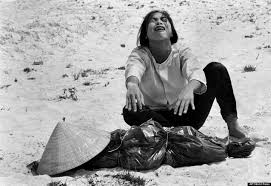
Vietnam War
d- From 1975 to 1979 Pol Pot's regime exterminated without suffering any major problems the urban and national minorities of Cambodia i.e. 22 % of the national population making 1.7 million victims out of 7 900,000 inhabitants. Pol Pot's regime was overthrown after the invasion of Cambodia by Viet Nam which stayed in Cambodia until 1989.
XII- Civilization
1 - Human Nature
After centuries of slow progress, the twentieth century was expected to be that of a high level of civilization often erroneously equated to an improvement of human nature ; on the contrary this century has shown how civilization is only a fragile varnish masking the constancy of a brutal and criminal potential in very high number of human beings.
This perversion amplified by the group effect generated in the twentieth century the genocides of the history of humanity (Armenians, Jews, Tutsi), the greatest carnage ever seen on battlefields and among civilians (First and second world War, use of atomic weapons against civilians, Vietnam War), elimination of a very substantial part of the population of Cambodia by fanatics acting with impunity in front of world and even return to cannibalism in Europe during the famine of 1919-1922 in Ukraine.
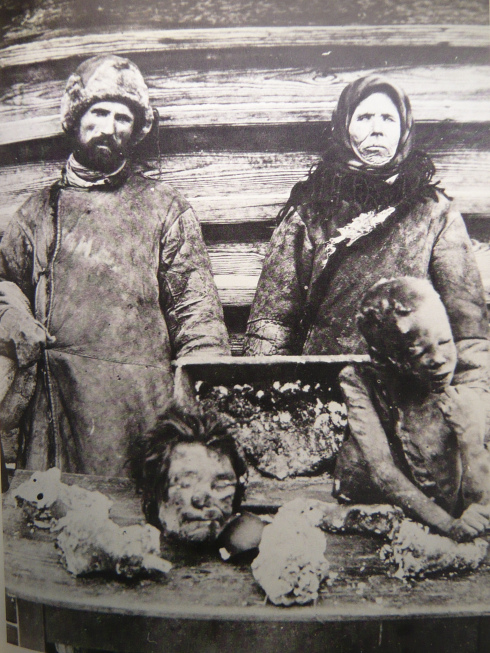
Example of cannibalism in 1922 in Ukraine
In the twentieth century many mass murderers were not satisfied with the sole death of innocents but had also free rein to express their sadistic impulses.
When authorities, institutions or nations generated the massacres, they gave them a legal aspect, which uninhibited criminal and sadist potential which inhabits the unconscious of too many human beings meanwhile to many others cloistered them in cowardice.
The craze for the enjoyment of the spectacle of death duly authorized and even encouraged by the institutions was amply illustrated by the case of public executions.
In France, public executions were banned on 24 June 1939 at the initiative the Council President Edouard Daladier. The reason was that the last public execution by beheading, which took place on June 17, 1939 had given rise to an unhealthy behavior of the media and of the crowd coming from the eve of the execution to enjoy the spectacle of the lethal torment.
In the U.S. public executions were banned in 1938. The reason was also the unhealthy behavior of the media and the crowd of 20,000 people who came to enjoy the spectacle of public hanging of Rainey Bethea in 1936. The press had named this event "Carnival in Owensboro" where the hanging took place. The hanged man was convicted of rape and burglary that should have caused his execution by electrocution inside a penitentiary, but to ensure an execution in public by hanging , the Main Jury had preferred to consider only the rape and exclude the burglary.
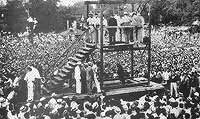
Carnival in Owensboro for the public hanging of Rainey Bethea
Human barbarity continued in the twenty-first century with for example the rise of far-rightist and Neo-Nazi movements in Europe and fanatical Islamist groups in the Middle East and Africa.
On the theme of the Holocaust we have seen in France in 2014, a man organizing a tour of a show dealing with hatred of Holocaust and Judaism in order to increase the anti-Semitism in the country and on top to make of it a profitable business. The private strong commitment of the Minister of the Interior Manuel Valls (today Prime Minister) has lead to the prohibition of this tour and to avoid a return to the atmosphere of WWII in France. This phenomenon was particularly worrying because the largest theaters of France were selected with an impressing booking rate from the public. In 2006 a young Jew was kidnapped and tortured to death by a group of barbarians in the Paris suburbs with the target to obtain a ransom from his family or from the Jewish community; a movie released in April 2014 to commemorate this significant event had to be quickly removed from the distribution system due to the total lack of interest for this event in France as opposed to that for the anti-Semitic prohibited show tour. Press articles on this subject were followed by many particularly hostile and anti-Semitic comments against this movie and Judaism which were quite similar to the themes of Neo-Nazi organizations in countries like Lithuania. On top public forums on internet have allowed people to express their hatred of Jews with foul language and provide useful information about human nature.
Group effect:
The group effect is a psychosocial phenomenon of consensus occurring when a group takes action. The group in "action" supersedes the individual and frees his impulses; consequently murders can be committed in group by individuals who can be usually quiet but group may also inhibit individual making him impassive while a murder or a violent action is committed in front of him. The group feels an artificial feeling of invulnerability, thinks that it acts in the right direction without burdening itself with rationality and ostracizes those whose thoughts are diverging. The group effect is amplified when its pseudo- morality and sense of invulnerability is supported by the authorities, institutions or nations.
We also note that too many U.S. film and television productions exploit the darker side of human nature (murder, sadism) which seems to inhabit an audience sufficiently large to make these productions financially profitable with the complicity of the media. This phenomenon reveals the barbarism which at the best exists in the unconscious of a wide audience who expressed it trough these productions. The acting out only requests favorable conditions for a certain number of individuals as this is often shown in the United States which tends to become a laboratory of crimes. As a matter of fact the U.S. has the largest prison population in the world with 730 prisoners per 100 000 inhabitants in 2010 whereas in Europe this figure is about 100. The number of crimes in the United States is 4.2 per 100 000 inhabitants against 1.16 for the European Union. Within the European Union the Baltic countries are an exception with a homicide rate of 5.9 (according to the latest figures from UNODC) i.e. five times larger than the average figure of the European Union.
In the United States the worship of money and consumption coupled with a public education system (pre- University) ineffective in many areas, the freedom of ownership of firearms and a too big income gap between the different segments of the population probably amplify crime. The U.S. indeed have a Gini coefficient of 0.45 / 1 making them the 41st largest country by unequal income distribution out of 138 countries surveyed; this type of figure can be often found in undemocratic and / or underdeveloped countries ; this figure is 0.30 / 1 for the European Union and 0.23 / 1 for Sweden the most egalitarian countries in the world .
2 - Institutions, Authorities Nations
Institutions, Authorities and Nations could transcend human nature and establish principles that guide it beyond its negative aspects; unfortunately it appears that they are all too often its reflection when it comes to implementing in a time guidelines designed in another time. The necessary involvement of representatives of these entities to apply supposedly transcendent principles leads too often to a return to cynical considerations despite the target of the guidelines was to put them aside.
Indeed, the human tragedies of the twentieth century have often shown that neither nations nor institutions nor the authorities burdened in fact with the moral principles that they valued in another time.
Representatives of a group often serve primarily the interests of their own group at the cost of their own rules if they question them even partially. Wars, genocides and massacres have amply illustrated this situation in the twentieth century.
After World War I France and England imposed both their power and a peace that led straight to World War II and in 1938 these two countries encouraged the conflict by a cowardly behavior in Munich and ruined the mission of the League of Nations.
We must also note that the lack of adequate reactions of the great powers against the first massacres of Armenians opened the way to genocide.
During World War II the Western Allies informed of the Holocaust in progress did not adapt their action to reduce its size and in China nearly 15 million Chinese (at least 3/4 of civilians) were killed by the Japanese army from 1937 to 1945. A very high price was paid by the USSR which had to fight almost alone in Europe against Germany and lost 27 million people as compared to 868 000 victims for Great Britain and USA together. The relatively restricted Anglo-American losses were due to their late intervention in continental Europe which began when Germany had indeed lost the war.
In August 1945 the U.S. destroyed by the first nuclear weapons two Japanese cities: Hiroshima and Nagasaki of which civilian populations amounted respectively to 344 000 and 240 000 people.
The historical narrative of this period followed the imperatives of the Cold War turning back to reality with a major ingratitude. In Western Europe the victory of the USSR against Germany was concealed for the benefit of an amplification of the role of Anglo-Saxon allies.
While France was integrated into allies despite its role in favor of Nazi Germany, Russia and the other former members of the USSR who built Victory in paying the highest cost in lives that no country has ever paid are not mentioned in the memorial spaces of WWII in Western Europe.
After three years of efforts to communicate with the French socialist MPs, we see our efforts rewarded and Russia was finally invited on 6 June 2014 to the commemoration of the landing of June 6, 1944 to be held at the Memorial of Caen (where the flag of Germany flies high but not that of Russia).
In 1948 the UN issued the Convention for the prevention and punishment of the crime of genocide whose application remains the privilege of the choice of representatives of its members.
In Cambodia 1 700 000 civilians were massacred but neither the U.S. nor China or other countries intervened in time. The decision of Vietnam to invade Cambodia ended the massacres but the Vietnamese left Cambodia with difficulty ten years later.
In Rwanda the UN withdrew most of its staff while the genocide could be feared to start at any moment leaving free reins to the genocidal militias. The United States did not intervene, arguing that these massacres were not really genocide and the UN Convention of 1948 did not apply. United States acknowledged the genocide after its completion. The reason for this behavior was probably a few months before, the humiliating defeat of the elite of U.S. Army yet: Navy Seals, Delta Forces, Rangers (very effective in the movies) on 23 and 24 October 1993 in Mogadishu (Somalia) against a group of terrorists equipped with basic weapons.
The situation of France is more embarrassing: After having armed and trained Rwandan Forces who participated in the genocide of Tutsi, France intervened to support the genocidal government. The halt of the genocide in Rwanda was not due neither to the UN or to France but to the victory of the RPA (Rwandan Patriotic Army).
The Church which has no other task than to assert a moral point of view in the world has impacted negatively on the fact by being too close of the Hutu to the point to exfiltrate priests who participated to the Genocide. These facts took place during the reign of John Paul II, who was canonized in spite of his fight against contraception despite the danger of AIDS, put above the saving of many lives especially in Africa ; on November 15, 2010 he stated: " It appears hurtful to human dignity and therefore morally illicit to develop AIDS prevention on the basis of the use of means and remedies that violate the authentic human meaning of sexuality and are palliative for these deep problems which are at the responsibility of individuals and of society. "
In 2008 the European Parliament has taken up and supported the Prague Declaration of the same year making equal Communism and Nazism and thus the crimes of Nazis as the systematic extermination of human groups based on a racial ideology and on the myth of a superior man. This position places the rightist ideology before the moral obligations that national and supranational organizations should support to avoid the rapid decay of civilization.
Nations, Institutions and Authorities do not transcend human nature but are only its reflection.
